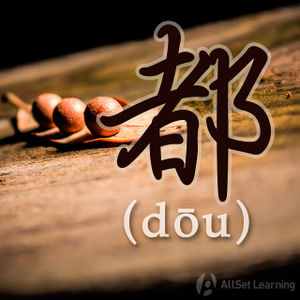Difference between revisions of "Expressing "every time" with "mei" and "dou""
| Line 42: | Line 42: | ||
{{Similar|Expressing "all" with "shenme dou"}} | {{Similar|Expressing "all" with "shenme dou"}} | ||
{{Similar|Expressing "even" with "lian" and "dou"}} | {{Similar|Expressing "even" with "lian" and "dou"}} | ||
| + | {{Similar|Expressing "everyone" with "shei"}} | ||
{{Basic Grammar|每|B1|每⋯⋯都⋯⋯|<em>每</em> 次 她 来 我 <em>都</em> 不 在。|grammar point|ASGXHQEF}} | {{Basic Grammar|每|B1|每⋯⋯都⋯⋯|<em>每</em> 次 她 来 我 <em>都</em> 不 在。|grammar point|ASGXHQEF}} | ||
{{Rel char|都}} | {{Rel char|都}} | ||
{{Structure|Sentence Patterns}} | {{Structure|Sentence Patterns}} | ||
{{Used for| Expressing quantity}} | {{Used for| Expressing quantity}} | ||
Revision as of 08:56, 20 September 2012
-
Level
-
Similar to
-
Used for
-
Keywords
"每...都..." (měi...dōu...) is a pattern used to express "every" when talking about a quantitative amount.
Structure
每 + Number + Measure Word + Noun + 都 + Adjective/Verb
An important note is that if the number is simply just "one", then it's usually omitted.
Examples
- 我 每 个 星期 三 都 去 实习。
- 他 每 天 都 上 班。
- 请 你 每 两 天 服 一 次 药。
See also
Sources and further reading
Books
- Chinese: An Essential Grammar, Second Edition (pp. 87-8) →buy
- Integrated Chinese: Level 1, Part 1 (3rd ed) (pp. 267) →buy
- Modern Mandarin Chinese Grammar: A Practical Guide (pp. 284-5) →buy



